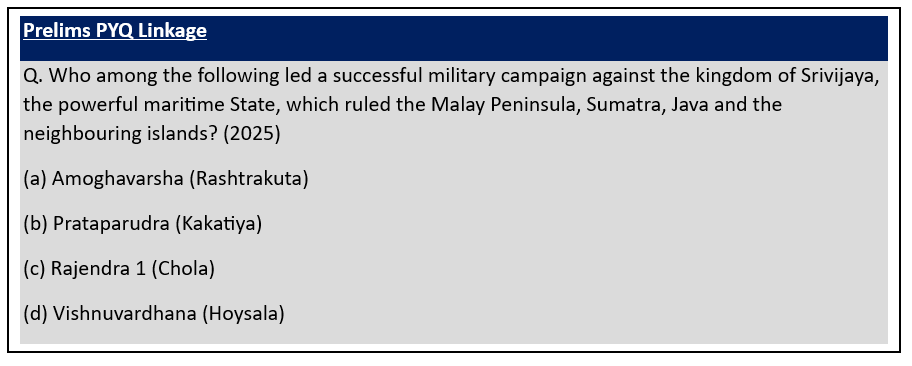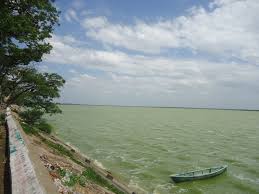Syllabus:
GS1: Indian culture will cover the salient aspects of Art Forms, Literature and Architecture from ancient to modern times.
Context:
The Prime Minister proposed a visit on July 27, and a planned commemorative coin release is expected to draw attention to the condition of the Chola Gangam tank in ruins for long.
More on the News
- Lies few kilometres away from the Brihadisvara Temple at Gangaikonda Cholapuram.
- The 1,000-year-old lake was once spread over 16 miles, the tank has shrunk to 17 km.
- It remains dry for most of the year as the canals that brought water from the Kollidam have long been abandoned.
Chola Gangam
Chola Gangam, locally known as Ponneri, was dug by Rajendra Chola to celebrate his northern campaign.
Historian K.A. Nilakanta Sastri, author of The Cholas, citing the Tiruvalangadu Copper Plates, notes that “at the end of the expedition, Rajendra erected a ‘liquid pillar of victory’ (ganga-jalamayam jayastambham) in his capital with the waters of the Ganga in the form of the tank Cholaganga.”
F.R. Hemingway records that the tank once irrigated 1,564 acres of land, its primary purpose being to supply drinking water to Gangaikonda Cholapuram.
A map of the northern Cauvery system shows how Kollidam water once filled a series of tanks before reaching Veeranam Lake, which then released surplus water into the river.
The tank reflects Chola water management skills, with elliptical bunds made of laterite to resist hydraulic pressure.
The square-shaped structure at the lower side of the tank contains a sediment trap linked with a silt ejector.
- The structure for releasing water [‘thoompu’], when the tank reaches its minimum capacity, is designed to create a vortex flow. This sucks the silt and deposits it into paddy fields, enriching them with nutrient-rich sediment.
It had once served as a stopover for overseas birds migrating to the Kodiakkarai Bird Sanctuary.
Its destruction has broken the chain of migration. It has also resulted in groundwater depletion in Gangaikonda Cholapuram and its neighbourhood.
Chola Dynasty (9th – 13th Century)
- The Cholas, one of South India’s longest-ruling dynasties, rose to power in the 9th century after defeating the Pallavas and ruled until the 13th century.
- Their medieval reign, led by kings like Aditya I and Parantaka I, marked a period of strong central power and significant development.
- The Cholas were not only known as skilled warriors and capable administrators, but were also accomplished builders.
- One notable achievement is the construction of the Brihadeeswarar Temple at Thanjavur, built by Rajaraja I Chola, father of Rajendra I, in 1010 CE.
Rajendra Chola
- Rajendra Chola ruled for 30 years, from 1014 CE to 1044 CE, and is often referred to as Rajendra Chola the Great.
- Under Rajendra I Chola, the Chola Empire’s trade boundaries extended as far as Song China, and this was facilitated through connections with the Khmer Empire which are renowned for constructing the largest Hindu temple, Angkor Wat.
- The famous expedition of Rajendra I Chola to Srivijaya (present-day Indonesia) forever changed the political and cultural influence of the empire far in the east.
- The Cholas also had trade links with the Arab world and Africa, establishing a far-reaching commercial presence.


Source: The Hindu

